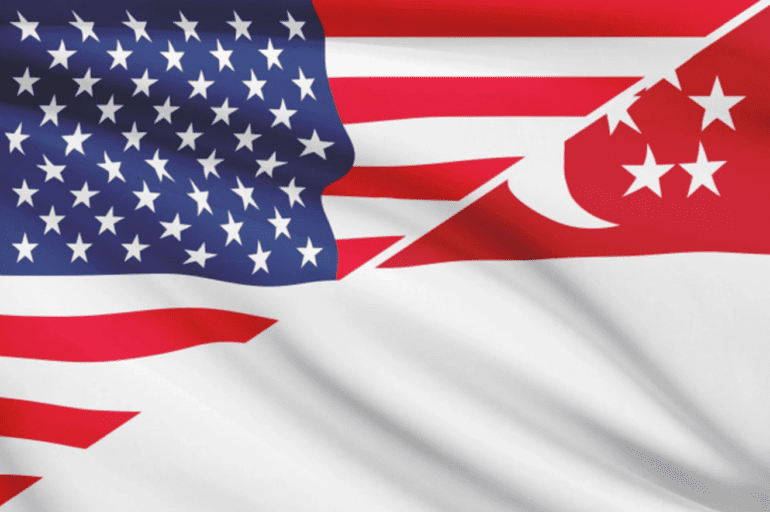TL;DR:
- Singapore and the United States align AI frameworks for compliance and innovation.
- IMDA and NIST completed a joint mapping exercise to harmonize AI governance.
- AI Verify and AI RMF facilitate responsible AI deployment and risk mitigation.
- Crosswalk publication streamlines compliance, reduces costs, and fosters innovation.
- Plans for a bilateral AI governance group to advance shared principles and information exchange.
- Collaboration on international AI security, safety, trust, and standards.
- Research collaboration between the US National Science Foundation and AI Singapore.
- US-Singapore Critical and Emerging Technology Dialog covers digital economy, data governance, and quantum technology.
- Bilateral roadmap for digital economic cooperation in development.
- Strengthened cooperation in digital payments and military technology.
- Information exchange on post-quantum cryptography migration in progress.
Main AI News:
In a strategic move, Singapore and the United States have joined forces to align their respective artificial intelligence (AI) frameworks, focusing on enhancing compliance and promoting the development of “safe, trustworthy, and responsible” AI innovations. This collaboration was initiated by Singapore’s Infocomm Media Development Authority (IMDA) and the United States’ National Institute of Standards and Technology (NIST).
The pivotal step in this partnership was the completion of a joint mapping exercise, which harmonized IMDA’s AI Verify and NIST’s AI RMF. This alignment aims to streamline international AI governance frameworks and, importantly, reduce the financial burden associated with meeting multiple compliance requirements.
Singapore’s AI Verify plays a pivotal role as a testing framework and toolkit, empowering organizations to showcase their responsible AI deployment through standardized testing procedures. On the other hand, AI RMF, provided by NIST, equips companies with essential resources to manage and mitigate the risks associated with the use and deployment of AI systems. It also ensures the responsible development and adoption of AI technologies.
A significant outcome of this collaboration is the publication of a crosswalk, which meticulously maps the two AI governance frameworks. According to the Singapore Ministry of Foreign Affairs, this crosswalk “will provide companies with greater clarity to meet the requirements within both frameworks, reduce compliance costs, and foster a more conducive environment for AI deployment and innovation.”
To further solidify their partnership, Singapore and the United States are actively planning to establish a bilateral AI governance group. This group’s primary objective is to advance shared principles and facilitate the exchange of crucial information pertaining to “safe, trustworthy, and responsible” AI innovation.
Moreover, the collaborative efforts between these two nations extend to shaping international AI security, safety, trust, and standards while emphasizing “responsible innovation.” This collaborative spirit also extends to research activities, as the United States National Science Foundation and AI Singapore will collaborate, with a particular focus on AI safety and security and enhancing workforce development initiatives.
The announcement of these bilateral endeavors was made during the inaugural US-Singapore Critical and Emerging Technology Dialog held in Washington, where discussions spanned a wide range of topics, including the digital economy, data governance, critical infrastructure, technology supply chains, and quantum technology.
One significant outcome of this dialogue is the plan to develop a bilateral roadmap for digital economic cooperation. This roadmap will lay the foundation for common principles on matters such as data governance, digital standards, and consumer protection. Furthermore, the United States Department of Treasury and the Monetary Authority of Singapore are set to explore avenues for strengthening bilateral cooperation in the realm of digital payments.
In a strategic move, the United States Department of Defense’s Defense Innovation Unit and Singapore’s Ministry of Defence (MINDEF) are considering formalizing a partnership aimed at harnessing commercial and dual-use technologies, including AI, to address operational challenges faced by their respective militaries.
Finally, plans are in motion for an extensive information exchange concerning post-quantum cryptography migration. This collaboration involves NIST, the United States Department of Homeland Security, Singapore’s National Quantum Office, and the Ministry of Communications and Information.
Conclusion:
The partnership between Singapore and the United States in AI governance signifies a significant step towards standardization, compliance efficiency, and responsible innovation. This collaboration is poised to create a more favorable environment for AI deployment and has the potential to shape international AI standards, benefiting both countries and the global market.

